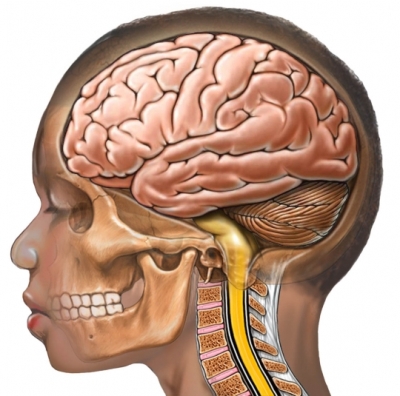Attention deficit hyperactivity disorder – ADHD
Description of ADHD
Attention deficit and hyperactivity disorder (ADHD) It is a chronic behavioral disorder. With his presence becomes hyperactive behavior, impulsive, and / or inattentive. The presence of ADHD can be judged, if symptoms persist for at least six months and are present in two environments (houses, at work or at school). ADHD can be manifested in children, adolescents and adults.
Reasons for attention deficit hyperactivity disorder
Causes of ADHD are unknown. Probably, This is caused by a chemical imbalance in the brain. Also can play a role genetic factors, since ADHD can be seen in different members of the family.

Risk factors for attention deficit hyperactivity disorder
Factors, which increases the likelihood of attention deficit hyperactivity disorder:
- The first child in the family – boy;
- One of the parents or a brother (especially twin) observed ADHD;
- Mother during pregnancy smoked cigarettes and / or drank alcohol;
- Parents have certain disorders (eg, alcoholism, conversion disorder);
- Premature birth.
Other possible risk factors:
- Traumatic brain injury at a young age (at least two years);
- Born with a serious heart condition;
- The presence of Turner syndrome (genetic disease);
- Exposure to certain pesticides;
- Watching TV or computer video games for more than two hours per day.
The symptoms of attention deficit hyperactivity disorder
All children display some of the symptoms of ADHD. But children with ADHD have symptoms, which are more frequent and consistent. They often have difficulties in school, with his family and friends.
ADHD can continue into adulthood. This can cause problems in a relationship, completing of the work.
There are three types of ADHD:
- Inattention (classic “ADD”);
- Hyperactive-Impulsive syndrome;
- The combination of both disorders.
Inattention (classic “ADD”)
- Easy distraction to sounds or event;
- Do not pay attention to details;
- Do not pay attention to the conversation;
- Careless mistakes;
- Act on instructions or tasks;
- Avoiding Action, dlintelnyh that require periods of mental effort;
- Forgetfulness in daily activities.
Hyperactive-Impulsive syndrome
- Concern, restlessness;
- Failure to play safely;
- Excessive talkativeness;
- Diversion of other actions;
- Difficulties in line or waiting for turn.
The combination of both disorders
ADHD combined type is the most common with a combination of the above symptoms.
Diagnosis of Attention Deficit Hyperactivity Disorder
There is no standard analysis, to diagnose ADHD. The diagnosis is usually made by a psychiatrist.
The diagnosis should be appointed, if a child in trouble:
- School;
- Learning
- Relationships with peers and family.
At the time of diagnosis should be collected the following information from parents, sidelok, Teachers:
- Study of ADHD symptoms in various conditions (Home and School);
- Age, where the onset of symptoms;
- As far as the behavior affects the child's ability to conduct everyday life.
A professional should examine the child for the following:
- Other disorders, that could cause or worsen symptoms;
- Education and communication problems;
- Aggression;
- Depression or anxiety;
- Psychotic symptoms;
- Personality changes.
For the diagnosis of ADHD symptoms must:
- Present in two or more kinds of;
- Interfere with your child maintain normal everyday life for at least six months.
Treatment of Attention Deficit Hyperactivity Disorder
The goal of treatment is, to improve the child's ability to conduct everyday life. Doctors should work together with parents and school staff. Together, they can set realistic goals and evaluate the child's response.
Treatment includes:
Dream
Children, who do not vysypayuyutsya, may have serious behavior problems. A key part of treatment is to ensure that children with ADHD prolonged sleep.
Medications
Medication can help to normalize the behavior and increase the duration of attention. More often take stimulants for ADHD. They increase the activity of brain regions, which appear, less active in children with ADHD. Stimulant drugs include:
- Methylphenidate (ritalin, Concert, Metadata, Daytrana)
- Dextroamphetamine (Deksedrin)
- Amphetamine (Adderal)
- Atomoxetine (Strattera)
- Lisdeksamfetamin (Vyvanse) – this drug has been approved for the treatment of adults with ADHD. It can also be used to treat children 6-12 years.
Because of the rare complications of heart, it is recommended to do an electrocardiogram (ECG) before taking stimulant medications to treat ADHD.
Other drugs include:
- Antidepressants, such as imipramine (Janimine, Tofranil), venlafaxine (Effexor), and bupropion (Wellbutrin)
- Klonidin (used for Tourette's syndrome) – for the treatment of impulsivity.
Povedencheskaya therapy
Children, who take medication and go to therapy will be cured, than, who simply use drugs. Therapy focuses on the practice of social problem-solving skills. Consultants are trained parents and teachers, how to help your child. This may entail changes in the classroom, as well as a method of education.
Other methods, such as using a pillow Disc'O'Sit, It may be helpful in improving children's attention. A dome-shaped pillow Disc'O'Sit, filled with air,which balances the child.
Prevention of attention deficit hyperactivity disorder
There are no methods to prevent ADHD, as the cause of the unknown. Proper treatment can prevent problems in the future.
